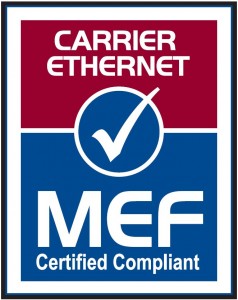What Carrier Ethernet 2.0 Offers

Carrier Ethernet 2.0 (CE 2.0) is the latest generation of services and specifications defined by the Metro Ethernet Forum (MEF) for offering carrier class standardized Ethernet products and services. CE 2.0 builds on the earlier MEF CE 1.0 specifications, but extends them to now provide up to 8 service types, with the addition of E-TREE and E-Access services on top of E-Line and E-LAN, with each supporting private or virtual private options. Additional specifications for multi-CoS, carrier interconnect, and improved manageability across multiple providers were other features added in CE 2.0.
Actelis Networks has been a longstanding member of the MEF, and the Actelis ML2300/230 and ML640 are the only Carrier Ethernet over bonded Copper platforms today certified for all eight CE 2.0 services.
Two key enhancements enabled by CE 2.0 include:
- New Service Types –The addition of E-TREE and E-Access services are key features. E-TREE services as defined in MEF 6.1 can be used to create a broad range of rooted-multipoint services like multicast IP video as an example. E-Access, as defined in MEF 33, now enables the delivery of wholesale access services, allowing an Ethernet access provider to extend services across an External Network-Network Interface (ENNI) from a retail service provider, as shown in the diagram below.

- Multiple Service Classes – CE 2.0 introduces standardized multi-CoS with application-oriented CoS performance objectives (see MEF 6.1, 10.2, 20, 23.1). CE 2.0 requires at least 3 Classes-of-Service to be supported on compliant equipment, allowing carriers to offer standards-based differentiated services within the same EVC/OVC, based on the 802.1p priority bits. Each class of service may have its own bandwidth profile, as well as associated performance metrics (frame delay, frame delay variation (jitter) and frame loss ratio). These metrics are typically used in defining key performance indicators (KPIs) and service level agreements (SLA). CE 2.0 also extends traffic management to include both Ingress and Egress Bandwidth Profiles per UNI, EVC and per CoS, with standard rate granularities (e.g. 1 Mbps steps for rates up to 10 Mbps, 10 Mbps step for rates up to 100 Mbps etc.), to fit customer bandwidth requirements.
Why CE 2.0 is Important
CE 2.0 is important because it continues to aid the global growth of the Ethernet services market by offering new services and certification standards for delivering interoperable Ethernet products and services.
The Metro Ethernet Forum (MEF) defined Carrier Ethernet (CE) in 2005, extending what was then a predominantly LAN technology to the WAN to allow service providers globally to offer standardized, reliable, native Ethernet services to consumer, residential and wholesale customers. Since then, Carrier Ethernet has grown into a booming $40B global annual services market!
CE 2.0 E-Access services are important in now opening up important new revenue opportunities by enabling end-to-end standards-based wholesale Ethernet services and SLAs that span multiple service operators’ networks For instance, an operator can use Actelis’ Ethernet First Mile (EFM) over Copper solutions can be used to provide Ethernet services to local customer locations, and interconnect those customers via a standard based E-NNI interface to other locations served by another operator’s network.
CE 2.0 is also important because of product and service interoperability assurance. Operators can confidently deploy MEF CE 2.0 certified equipment from multiple vendors that support the standard, such as Actelis, to build standards-based, interoperable networks spanning copper, fiber and wireless. In addition, CE 2.0 enables multiple providers to interwork and deliver end-to-end Ethernet services with standard CoS, bandwidth profiles and service quality.
